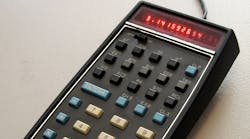We have become addicted to digital technologies, but when all things are considered, they are really important tools for both daily life and our work. The advancement of digital technologies has revolutionized every part of today’s world. This transformation has been so influential, it’s referred to as Industrial Revolution 4.0. But there is some apprehension.
Consciously and subconsciously, we ask, “Do we trust modern technology to perform as promised?” The trust factor is one of the biggest hurdles when it comes to adopting digital technologies. I started thinking about this subject because of a TV commercial I had seen. A salesperson led the barefoot customer to a standup scanning pad. While the scanner worked, the narrator told how the device made a virtual 3D foot model within a few millimeters of precision.
Do We Trust Technology?
It played up how the state-of-the-art scanning device ensured a perfect fit, but then what I call the “human factor” took over. The scene shifted, the salesperson was now sitting in front of the customer measuring their foot again. Only this time with the traditional Brannock metal foot measuring device, circa 1927. What happened to the cutting-edge 3D scanner?
I’m guessing this mistake wasn’t planned. More likely this was a video moment to introduce the shoe being sold rather than a statement about technology. But it does play to the subliminal need we have to verify the accuracy of our technology. Still, the comparison between the scanner and the Brannock device had me chuckling a little.
It also brought back an early memory of how technically inclined people corroborate technologies in not so veiled ways. In 1972 Hewlett-Packard (HP) introduced the world’s first scientific pocket calculator. The HP-35 was such a breakthrough that every engineer wanted one, but they were expensive (around $2,500 in today’s dollars).
And like the 3D foot scanner, there was the human factor effect here too. Many of my friends fortunate enough to be able to afford one usually checked the little computer’s answers with their trusty, 1600s-circa slide rules. It wasn’t that they didn’t trust the HP-35, but it took a while for them to be comfortable with the technology, and the human factor required proof.
I’m sure some readers think we have moved beyond that in today’s digital world, but the human factor is still alive. And that includes our power deliver system with all of its cutting-edge smart grid technologies. We trust technology, but we have an intrinsic need to authenticate it.
Test and Test Again
One of my favorite examples is the dynamic line rating (DLR) technology. It’s been around since the 1990s. Many studies have shown transmission line ratings could be increased by 10% to 25% with the addition of DLR technology, but that’s not happening. The U.S. is still in the validation phase for DLR applications with pilot projects while other countries install them. Keeping it simple for those not familiar with transmission line rating methods, traditionally tables (static line ratings) are used to determine transmission line capacities.
It’s a system based on conservative assumptions concerning weather conditions and conductor heating. It was developed by a group of transmission engineers in the 1930s. The tables proved popular, and have been used ever since. Considering the timeframe it was truly a marvel, but that was almost a hundred years ago!
Granted, the first generation of DRL devices were very primitive and hard to use compared to today’s generation of platforms. Today, a lot has changed both gridwise and with the latest generation of DLR technologies. These systems are really user-friendly and employ everything from LiDAR and satellite radios to artificial intelligence. They provide real-time transmission line ratings 24/7. They are also easy to install. Some don’t even require the monitoring equipment to be attached to the conductors. Check out equipment from companies like EDM International, Lindsey Manufacturing, LineVision, and others to see what is available.
After the Department of Energy noted the U.S. lags behind other countries in the deployment of DRL technology the Federal Energy Regulatory Commission proposed rulemaking that could expand DLR technology use on the U.S. grid. Will it overcome that human factor? That’s hard to say, but there are several active DLR projects taking place in the U.S. and it’s timely. With all the attention focused on our infrastructure, DLR technology appears to be an ideal solution for increasing the nation’s transmission capacity with little disruption. It’s going to be interesting!


